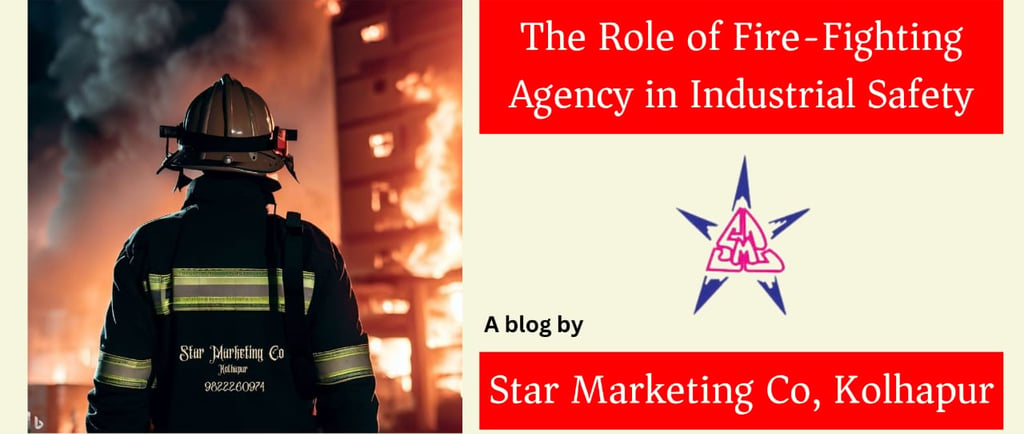The Role of Fire Fighting Agencies in Industrial Safety
How Fire fighting agencies can help the industry?


Introduction
In industrial settings, ensuring the safety of employees, equipment, and property is of paramount importance. One crucial aspect of industrial safety is the effective installation and maintenance of firefighting equipment. This article explores the vital role that fire-fighting equipment providers play in safeguarding industries against potential fire hazards. We will delve into the significance of fire installation systems, the role of fire fighting system installation companies, and the importance of obtaining a No Objection Certificate (NOC) from the fire department.
1. Understanding Fire Fighting Equipment
Firefighting equipment comprises a wide range of tools and devices designed to detect, control, and extinguish fires. This includes fire extinguishers, fire alarms, smoke detectors, sprinkler systems, fire hoses, and more. These equipment are strategically installed throughout industrial facilities to ensure rapid response in the event of a fire outbreak.
2. The Importance of Fire Installation Systems
Fire installation systems are comprehensive setups that integrate various fire-fighting equipment. These systems are customized based on the specific needs and risks associated with each industrial setting. They ensure that the equipment is correctly placed, interconnected, and capable of effectively mitigating fire emergencies.By implementing a well-designed fire installation system, industrial facilities can significantly enhance their fire safety measures. Such systems provide early detection of fires, enabling prompt evacuation and swift action to control and suppress the blaze. Additionally, they minimize potential damage, reduce downtime, and protect the lives of employees.
3. The Role of Fire Fighting System Installation Companies
Fire-fighting system installation companies are specialized entities that provide expert services in the design, installation, and maintenance of fire safety systems. These companies possess the necessary expertise, knowledge, and experience to evaluate the unique fire risks of industrial environments. Their role begins with conducting a thorough assessment of the facility to identify potential fire hazards. Based on the findings, they develop a tailored fire installation system that includes the optimal placement of fire fighting equipment, fire alarms, and emergency evacuation routes. Once the system is installed, these companies also provide regular inspections, maintenance, and testing to ensure the equipment's functionality and compliance with safety standards. Their proactive approach helps mitigate the risks associated with fire emergencies and ensures continuous operational readiness.
4. Obtaining a No Objection Certificate (NOC) from the Fire Department
Before commencing operations, industrial facilities must obtain a No Objection Certificate (NOC) from the local fire department. This certificate signifies that the facility has adhered to all fire safety regulations and possesses the necessary fire-fighting equipment and systems. Fire-fighting equipment providers play a pivotal role in assisting businesses in acquiring the NOC. These providers offer guidance and expertise in aligning the facility's fire safety measures with the regulatory requirements. They ensure that the installed equipment and systems meet the fire department's standards, enhancing the chances of obtaining the NOC without delays or complications.
Conclusion
In conclusion, fire-fighting equipment providers play a vital role in industrial safety. By offering comprehensive fire installation systems, expert guidance, and ongoing maintenance, they enable industrial facilities to safeguard their employees, assets, and operations against the devastating effects of fires. Obtaining the necessary NOC from the fire department is crucial, and fire fighting equipment providers can assist in ensuring compliance with fire safety regulations. By prioritizing the role of these providers, industries can establish a robust safety culture and minimize the risks associated with fire emergencies.
